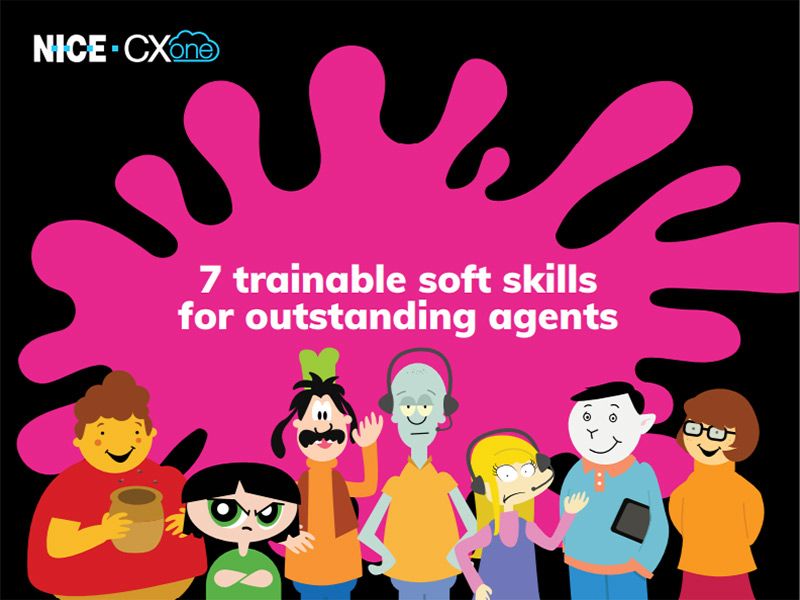Building an understanding of different lived experiences will ideally improve empathy and reduce barriers during customer and agent interactions. Ultimately, this will help build successful customer relationships.Proactively preparing to serve customers with disabilities is not only the compassionate thing to do, but it also makes good business sense. According to Monsido, 56.7 million people in the U.S., 80 million in the European Union, and 20% of Australians identify as being disabled. If you are prepared to serve these segments of the population, it will give you a competitive advantage and increase customer satisfaction and advocacy.“When it comes to customer service for people with disabilities, there are certain subtleties that can really make a difference in how you make a customer feel. Simply being aware of them, and maybe making slight alterations in how you do things, can really elevate the service that you offer and leave a great lasting impression on your customers.”[1]
-Deque

Offer a variety of self-service options for maximum CX
Like the majority of customers today, a person with a disability is likely to prefer self-service. In fact, one customer we spoke with wants customer service leaders to know she’s fiercely independent and doesn’t need special treatment. In her words, “don’t help me unless I ask for help.” However, she did say it’s okay to ask her if she needs help, but just don’t make assumptions.When it comes to self-service preferences there is no one-size-fits-all option. Take for example a customer with advanced ALS (Amyotrophic lateral sclerosis) who is completely paralyzed except for the ability to use their eyes.This customer cannot speak with an agent or use voice interaction artificial intelligence (AI). For support, they use self-service, chat, or email, since the customer can only communicate by typing out responses using only their eyes.Having an accessible chat feature can be especially important—especially for keyboard-only users. Ensure your bot is detectable by Screen Reader software and keyboard-only users. Keep in mind some users need more time to type up the responses. Many chat features time out too quickly to serve these customers. You can use virtual agent software to ask the customer if they need more time before disconnecting.
Focus on agent soft skills
Many customers will still want to interact with a human or will need to be in touch to resolve more complex issues. All customers require patience and empathy, and at times, customers with unique needs such as disabilities will require more care and attention. When empathy and communication are of utmost importance is truly where agent soft skills come into play.Including these soft skills training in all onboarding and continuing to reinforce and provide examples in coaching and everboarding goes a long way toward being a welcoming and inclusive customer service organization.

Improve customer experience with clear communication
If a customer self-identifies as disabled, it’s okay to ask questions including what type of accommodations they might need. That’s much more empathetic than avoiding the topic and making the situation uncomfortable. A best practice is to never assume you know what a customer needs. In most cases, it's best to ask them if you're unsure.When we spoke with one disabled person, they said they believe it’s their responsibility to communicate what they need. However, everyone is different. That’s why having access to customer history and providing personalized service is so important. It assures customers of your inclusivity and that you care about their needs above all else.
If an agent inadvertently offends a person with a disability, it’s best for the agent to apologize and ask the customer what they wish the agent had done differently. This can be an important customer service teaching moment. Real-time interaction guidance can help agents turn this negative experience around.96% of customers expect companies to make their interaction easy without the need to repeat information[2]
Invest in a solid UI/UX website design
If a website is difficult to navigate for the average person, imagine how painful that process could be for someone with advanced ALS. There might be certain processes put in place for security purposes that seem like a good idea, but they could end up causing too much friction for a customer with a disability.Employing a solid user interaction and user experience (UI/UX) design can help you identify and eliminate areas of friction. It’s not only a compassionate approach to service, but the ADA also requires all public businesses to ensure every program, service, and good they provide—including those provided online—are accessible to people with disabilities.[3]However, it also makes good business sense. Research by UsableNet shows that people with disabilities spend a half-trillion dollars annually.
For example, consider the common process of requiring users to upgrade their accounts. The process often involves sending a code to a mobile phone in order to complete the upgrade. This makes the process impossible for someone who can’t use a mobile phone, such as our customer with ALS. They are not able to operate a mobile phone or a landline.An agent can save the day by providing empathetic service rather than regurgitating the required steps. In this case, the customer understands the upgrade process. But the customer cannot use the upgrade process and they need a different option. Once again, it’s important to ask questions, listen, and understand the customer’s perspective so you can help them find a solution that works.Organizations that use technology to revamp CX can increase customer satisfaction by 15% to 20%, reduce cost of service by 20 to 40% and boost conversion rates and growth by 20%[4]

Quick Tips for Better Communication
- Offer multiple options for all customers—chat, phone, and email are a must.
- Apply empathy and understanding but don’t make assumptions. If something isn’t clear, ask questions to ensure understanding.
- Be patient if the customer takes longer to respond. Don’t try to finish sentences or jump in before the customer is finished speaking or typing. Never penalize employees for taking extra time to offer extra support.
- Always be respectful—check pity or prejudice at the door—watch language that could be offensive.
- Employ people with disabilities but don’t segment them or your customers with disabilities—all employees will benefit from learning and understanding (Invite someone as a guest speaker during training. Ask employees if they know someone or even live with someone who has a disability.)
- Ensure you have customer-facing knowledge articles as well as internal-facing articles that provide details about the services you provide for customers with disabilities.

[2] NiCE CXone: Customer Experience (CX) Transformation Benchmark (2020)
[3] ADA: Guidance on Web Accessibility and the ADA (2022)
[4] McKinsey: Service industries can fuel growth by making digital customer experiences a priority (2020)




